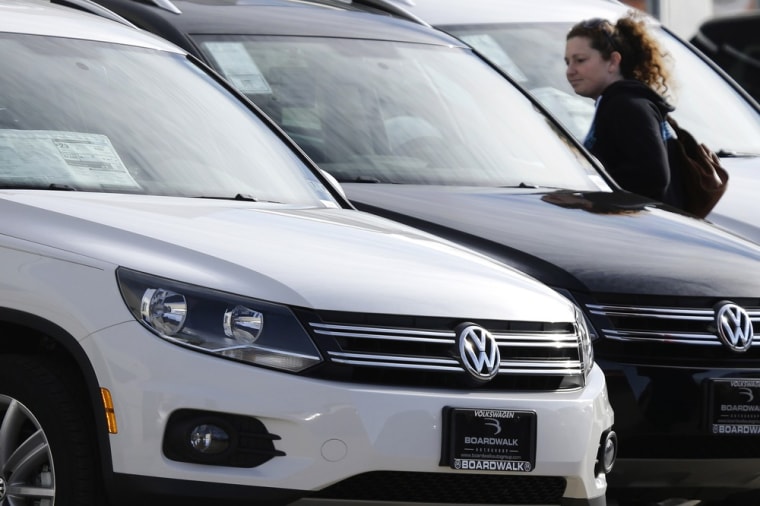Auto loans have gotten longer.
Six- and seven-year loans are becoming an increasingly popular choice — and some lenders will even stretch out those payments eight years. These long-term loans allow buyers buy the vehicle they want with the monthly payments they can afford. But it also means they will pay more overall.
The average new car loan in the fourth quarter of 2012 was 65 months, according to Experian Information Solutions. That's a new record.
“It’s gotten ridiculous,” said Anthony Giorgianni, associate finance editor for Consumer Reports Money Adviser. “With a long-term loan you pay more interest because you’re paying off the loan over a longer period of time. And longer-term loans tend to have higher interest rates.”
Consumer Reports Money Lab ran the numbers on the purchase of a new car that cost $30,520, presuming a 10-percent down payment. They used loan rates from CapitalOne.com in mid-October 2012.
With a 48-month loan, the rate would have been 3.39 percent and the monthly payment $659. The longer 72-month loan would be at a higher interest rate – 3.99 percent – but the monthly payment would be significantly lower, just $462.
Consider the total cost: $34,702 for the shorter loan, $36,339 for the longer loan. That’s a difference of $1,637.
Jack Gillis, author of The Car Book 2013, advises buyers to look at the big picture, not just the monthly payment.
“A car is a bad investment, so you want to reduce the cost of ownership as much as possible,” Gillis said. “The best way to do that is to get a loan with as short of a term as you can possibly afford. The way I see it, that means no longer than a 48-month loan.”
Dealers and lenders don’t argue with the math, but they say longer loans let them better serve their customers.
“The more options people have in terms of how to structure their credit transaction, the better it is for them,” said Bill Himpler, executive vice president of the American Financial Services Association, the trade association for the consumer credit industry.
Low down payments can also hurt you
Interest rates on new car loans have been incredibly low for several years now and that’s resulted in lower down payments.
The experts at Edmunds.com believe 20 percent is the sweet spot for a down payment, but most car buyers are nowhere near that. According to their analysis of new and used car purchases, the average down payment in 2011 was about 11 percent.
“The faster you pay off the car, the better it is for you,” said Ronald Montoya with Edmunds.com.
That’s because cars depreciate most quickly when they are new. With a low down payment you’re not getting as much equity in the vehicle. In other words, you may owe more on the car than it’s worth.
“If anything happens to that vehicle in the first year or two – it’s in an accident or is stolen – you may owe some money out of pocket to the lender even after you get the insurance payoff.”
That’s called being upside down. The longer the loan, the longer the upside-down period is likely to be, especially if there’s a low down payment. If you need to sell or trade-in the car for some reason when you’re still upside down, you won’t get enough for it to pay off your existing loan.
The bottom line
The shorter the loan and the bigger the down payment, the less that vehicle will cost you to own. It will also reduce the risk that you will lose money from an early sale or trade-in, accident or theft.
Don’t fixate on the monthly payment; that’s what the dealer wants you to do. Consider the total cost of the deal during the life of that loan.
“Our rule of thumb: Buy a car that you can get with a loan of no more than 48 months and keep that car at least as long as it takes to pay off that loan,” said Giorgianni at Consumer Reports. “If you have to go more than four years to get the payments where you need them, get a used car or get a lower cost car.”
It’s also important to comparison shop around for the loan, just as you shopped for the car.
“Before you go into the dealership, make sure you know what sort of rate you can get from your bank or credit union, so that you know if the rate at the dealership is better,” Gillis advised.
More Info:
- Consumer Reports Money Adviser: Low Car Payments Can Hurt You
- Edmunds.com: How Much Should a Car Down Payment Be?
Herb Weisbaum is The ConsumerMan. Follow him on Facebook and Twitter or visit The ConsumerMan website.
